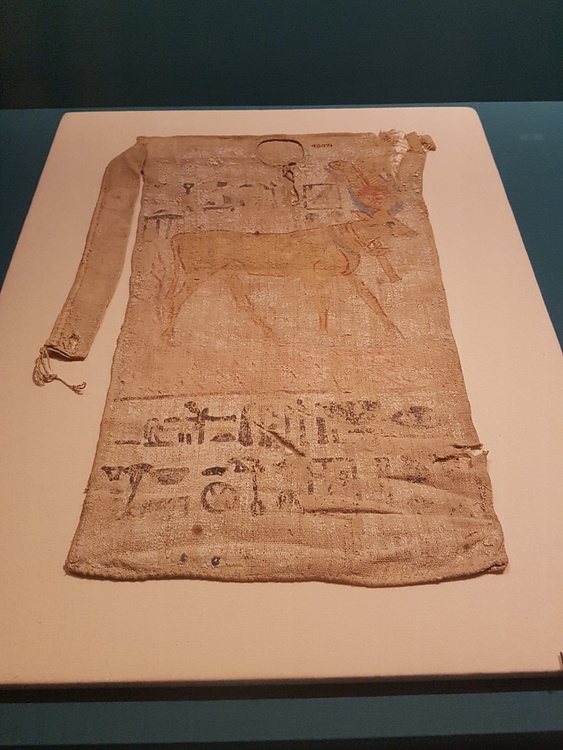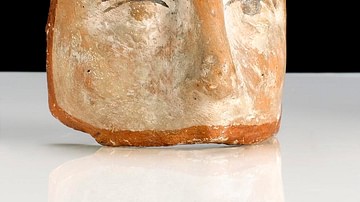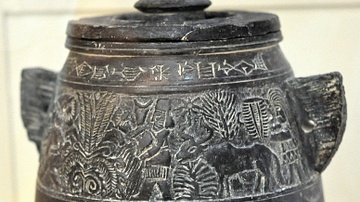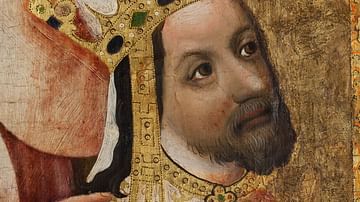Illustration
Egyptian votive tunic. Probably 19th Dynasty, about 1275 BCE. Possibly from Deir-el-Bahari, Thebes. The British Museum, (photo taken at The Powerhouse Museum, Sydney, Australia)
Often described as a child's tunic because of its small size, this garment probably had a more sacred function. It is dedicated to Hathor, who is depicted in the shape of a cow and described as 'Hathor foremost of Thebes, Lady of Heaven, Mistress of the gods' in hieroglyphs above the animal. Such tunics would have been offered to the goddess, possibly to invoke protection for a child or a woman during labour.
Cite This Work
APA Style
Miate, L. (2017, June 01). Egyptian Votive Tunic. World History Encyclopedia. Retrieved from https://www.worldhistory.org/image/6724/egyptian-votive-tunic/
Chicago Style
Miate, Liana. "Egyptian Votive Tunic." World History Encyclopedia. Last modified June 01, 2017. https://www.worldhistory.org/image/6724/egyptian-votive-tunic/.
MLA Style
Miate, Liana. "Egyptian Votive Tunic." World History Encyclopedia. World History Encyclopedia, 01 Jun 2017. Web. 25 Apr 2024.




